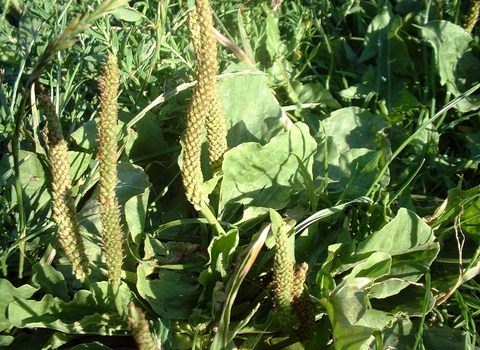
©Neil Wyatt
Greater plantain
Pushing its way up through the cracks in pavements, the straw-coloured flower spikes of greater plantain or 'broadleaf plantain' are a familiar sight. This 'weed' also pops up in lawns, on roadsides and along field edges.
Scientific name
Plantago majorWhen to see
January to DecemberSpecies information
Category
Statistics
Height: up to 20cmCommon.
